As we near the demise of one of the most iconic attractions in the history of the Disney theme parks, we felt it was important to catalog a brief, yet detailed history of Disney’s version of the log flume ride. With The Walt Disney World version of Splash Mountain closing forever on January 22, 2023, here’s a look at the incredible and fascinating story of this member of the Magic Kingdom mountain range.
The History of Splash Mountain
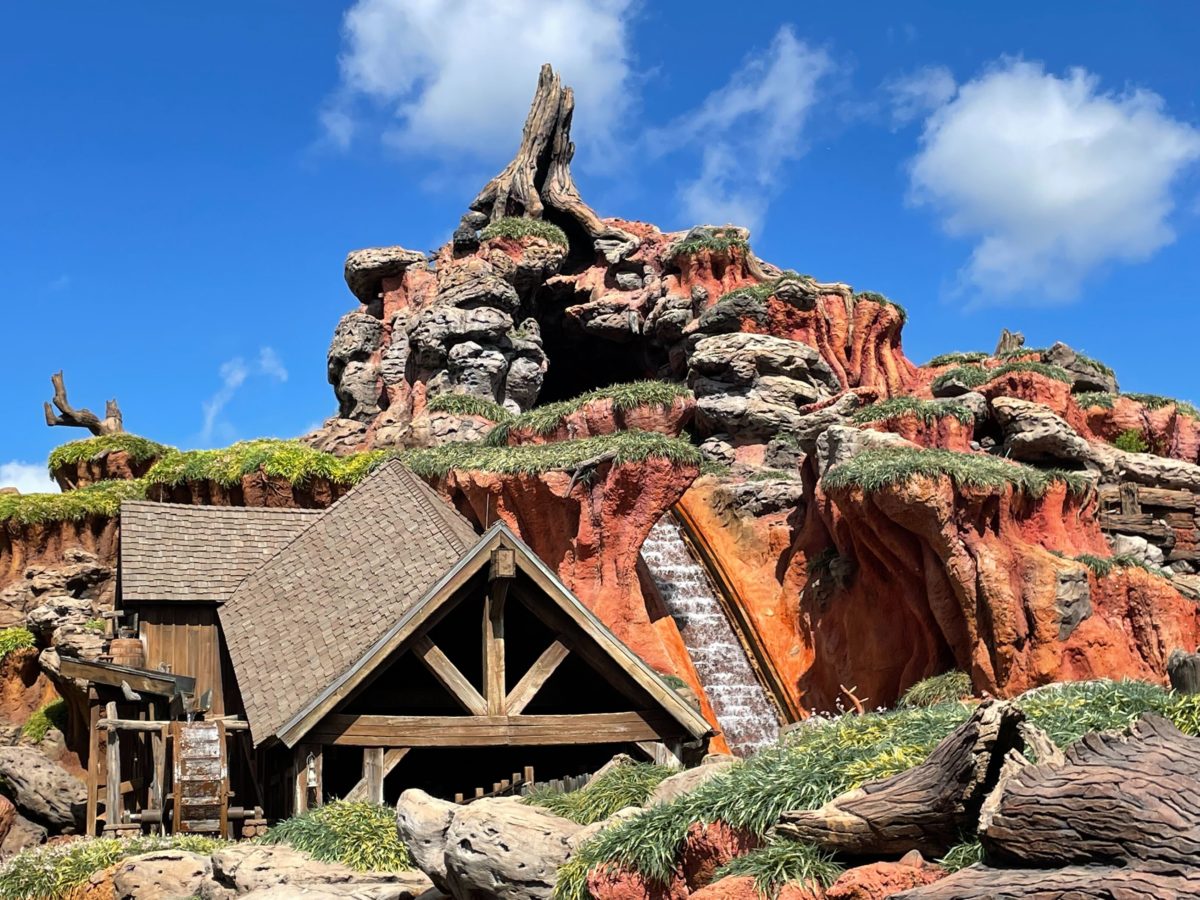
Creation
During the summer of 1983, Imagineer Tony Baxter was trying to devise a way to draw guests into the often deserted Bear Country at Disneyland. The Country Bear Jamboree never achieved the same level of popularity at Disneyland that it enjoyed in the Magic Kingdom, and this remote land was often void of guests. What this area needed was an “E-Ticket” attraction.
At the same time, Dick Nunis, President of Walt Disney Attractions, was pressuring Imagineers to come up with some sort of a water ride to help guests stay cool during the hot summer months in Anaheim. He argued that “All the other parks have a flume ride.” To which the Imagineers countered, “That’s exactly why Disneyland should not – we need to be unique.”
One day, while making his hour-long drive to work, Tony Baxter was struck with an idea. Why not use the characters from Disney’s film “Song of the South” in some sort of a water ride? Br’er Fox, Br’er Bear, and Br’er Rabbit were very well known to the general public, yet this movie had not yet been developed into an attraction like so many of Disney’s other films. When he arrived at his office, Tony got together with coworkers Bruce Gordon and John Stone and started brainstorming. After several days of work, the three men came up with a fairly complete concept for an attraction: The Zip-A-Dee River Run.
Further development moved swiftly, and soon a model of the attraction and more detailed storyboards were complete. It was time to pitch the concept to newly installed CEO Michael Eisner and President Frank Wells.
Overall, it was an easy sell, but Eisner didn’t like the name “Zip-A-Dee River Run.” He suggested that the Imagineers add a mermaid to the attraction so they could tie it into the recent Disney live-action hit “Splash” that starred Daryl Hannah and Tom Hanks. The Imagineers convinced Eisner that this wasn’t a good idea, but he was still insistent that the attraction’s name be changed. He just didn’t think Zip-A-Dee River Run would appeal to the teenage audience, the target group for this ride. When someone suggested they add the word “Mountain” after “Splash,” everyone knew they had hit upon the perfect name as this would add a new peak to the Disney chain that already included the Matterhorn, Space Mountain, and Big Thunder Mountain.
Splash Mountain would mark the first time that an attraction based on an animated film would be built outside of Fantasyland, something that now seems very common. To that end, it was important that the exterior structure blend in with its surroundings, such as The Haunted Mansion and Bear Country. Guests would only see the “cartoon world” inside the attraction’s interior. In addition, the foundation for the ride was sunk deep in the ground, so the mountain did not tower too high over its neighbors. Also, with so many new animals taking up residence in Bear Country, this land was renamed Critter Country.
It’s estimated that the attraction cost $75 million, an extraordinary amount of money for that time. Although a number of new Audio-Animatronics figures were created for the ride, the vast majority would come from the shuttered America Sings in Tomorrowland.
The decision to make use of the audio-animatronics from America Sings was an easy one, as many believed a replacement show would be built shortly after Splash Mountain opened. Dave Feiten was then brought in to animate and fix story and staging problems. Feiten moved nearly all of the animatronics to new locations and, in the end, removed 10 animatronic figures from the ride completely to improve the show.
The “official” story of the creation of Splash Mountain maintains that the inclusion of the America Sings Audio-Animatronics figures was part of the initial plans. As the story goes, Marc Davis had created characters and designs for Song of the South that were never used in the film. Then, almost 30 years later, they were reborn in the America Sings attraction. Moving the AA figures to the new Splash Mountain attraction would be a perfect fit as they were already themed appropriately, as Marc Davis was the one who drew the Br’er characters for the Song of the South film.
However, according to Alice Davis (Marc Davis’ wife), it was the out of control budget, not some grand plan, that necessitated the scavenging of one attraction for another. It is interesting to note the Carousel Theater sat empty for ten years after America Sings closed. It finally reopened in 1998 with a West Coast version of Innoventions.
Ground clearing for Splash Mountain began on April 24, 1987. The ride would open over two years later on Monday, July 17, 1989. Actor Jim Varney (known popularly as Ernest) and twelve celebrity children join Chairman and Chief Executive Officer Michael Eisner, Brer Rabbit, Brer Fox, and Mickey Mouse in turning on the water pump to create a big splash.
On Tuesday, July 18, 1989, Splash Mountain was officially open to the public.
Disneyland Attraction
The differences between the Walt Disney World and Disneyland attractions are actually much greater than you might think:
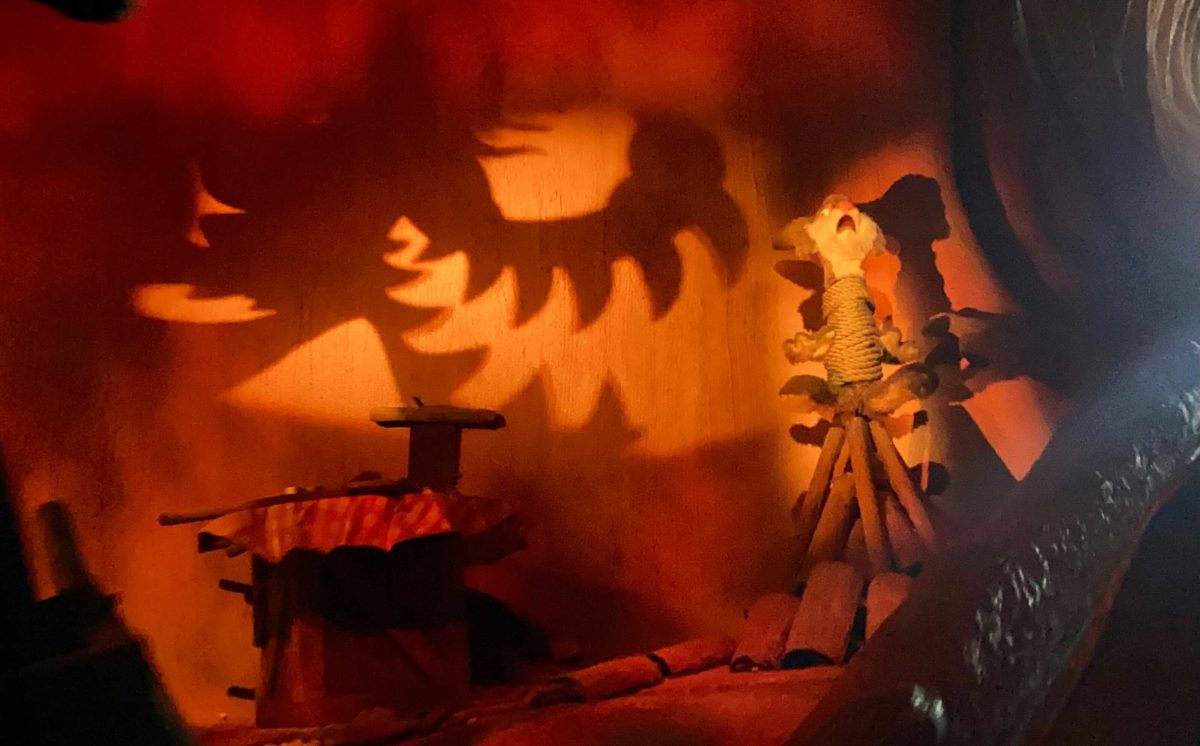
- The vehicles at Disneyland feature single-file seating where each guest gets a backrest but usually has their legs crossed into the seat in front of them.
- The first outdoor scene is not as elaborate (mostly just looks into the park)
- The lift hills do not have water gushing down them like a waterfall
- The Brer Rabbit, Fox, and Bear animatronics are not as advanced as their Florida counterparts and bare less resemblance to the film characters
- Instead of a hopping Brer Rabbit, he is pushing a rail-car
- Brer Rabbit gets trapped in some honey and not in a honeycomb by Brer Fox
- The Possum and Rabbit families singing is completely unique to Disneyland
- The turtle side-kick character is exclusive to Disneyland
- The overall soundtrack is quite different
- Some creatures who appear at DL that are not in the WDW version include a donkey, giant Cat people, giant wolf people, and giant dog people, all recycled from America Sings.
Two More Mountains Make a Splash
Attendance soared at Disneyland with the addition of Splash Mountain, and soon after its opening, Michael Eisner okayed the construction of a similar attraction at the Magic Kingdom in Florida. At the same time, the Oriental Land Company requested a version for their Tokyo Disneyland park. However, these would not be carbon copies of the Disneyland version.
The History of Splash Mountain at Tokyo Disneyland
At Tokyo Disneyland, the Imagineers created a brand new Critter Country for the park. Here it would be a sort of sub-land to Westernland (their version of Frontierland). This would allow the attraction to fit in better with its surroundings.
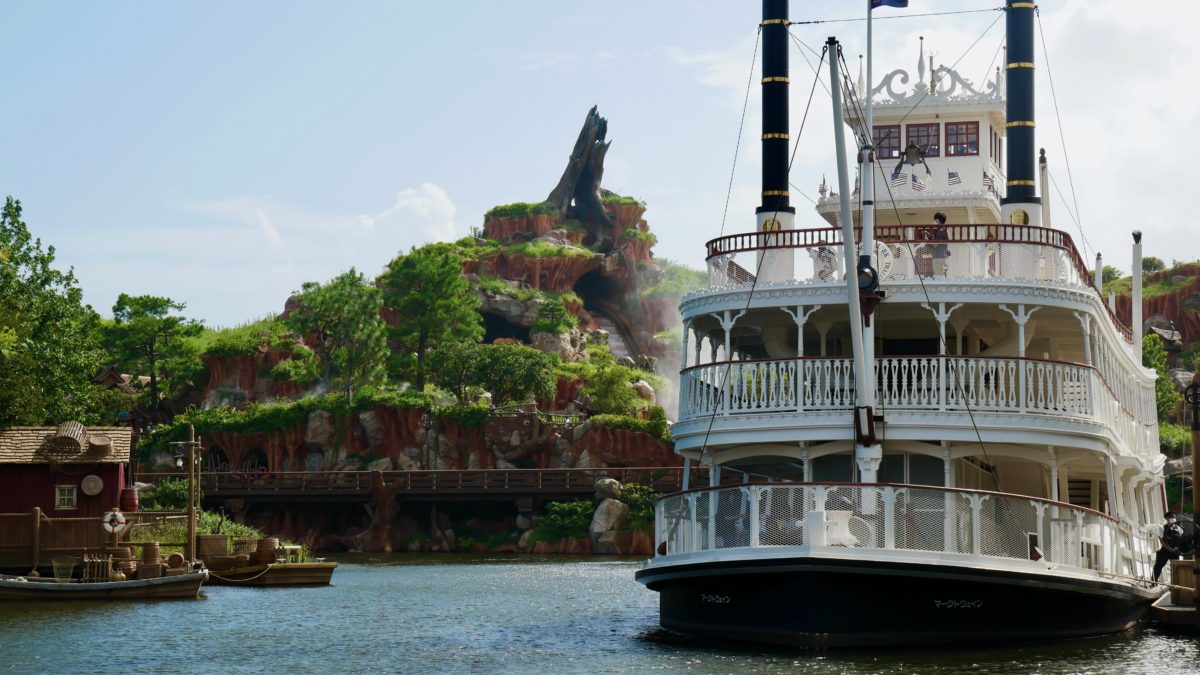
Although the exterior of this Splash Mountain would be similar to the one in California with its towering Chick-A-Pin Hill, the actual track layout would be somewhat different. Also, the loading and unloading of the logs would take place in two different locations (similar to the Haunted Mansion), and these activities would be located inside the mountain. In addition, the logs were re-engineered to create less of a splash due to the harsher winters and cultural differences.
The Tokyo version also contains a two-story, counter-service restaurant, Grandma Sara’s Kitchen, deep within the mountain. That version of the attraction opened on October 1, 1992.
We all know that Splash Mountain was loosely based on the characters of Song of the South, but most of us don’t know the backstory that the Imagineers gave this fabled mountain (which is most evident in the Tokyo ride). Legend has it that deep in the “New-nited States of Georgia,” live critters that walk and talk in the same manner as human folk. At the center of this magical land is Chick-A-Pin Hill, and it’s here that the Beaver Brothers had built their sturdy new dam. But unbeknownst to them, Rackety Raccoon had also constructed a juice producing still in the same area. And it seems that while Rackety was concocting a new, experimental brew, he used a few too many blueberries with disastrous results. When his still exploded, it took the Beaver Brothers’ dam with it, and water began to rush downhill through the many caves, burrows, holes, and tunnels that crisscrossed the mountain. From that moment on, the local critters started calling their home Splash Mountain, and the name stuck.
The Critter Country at Tokyo Disneyland references said characters in Rackety’s Raccoon Saloon just outside the attraction’s exit, but also with the Beaver Brothers’ version of the canoes guests can row around Tom Sawyer Island.
The History of Splash Mountain at Magic Kingdom
Bringing Splash Mountain to Florida would present other challenges as it, too, had no Bear/Critter Country, but in this case, no area to create a new land either. Here, Splash Mountain would need to be a part of Frontierland, and the only available location was next to Big Thunder Mountain. This would require relocating the Frontierland Train Station and using much of the land originally intended for the Western River Expedition attraction. As you can see, the approach to Thunder Mountain was vastly different than it is today.
Another problem the Imagineers faced in Florida was how do you seamlessly blend the American Southwest represented by Thunder Mountain with the Old South of Splash Mountain. These areas are several thousand miles apart in the real world, and their topography is vastly different. One way to achieve harmony was through the use of color. Splash Mountain at the Magic Kingdom would use deeper oranges and reds than its California counterpart in an effort to complement the nearby desert terrain. In addition, the newly moved train station would act as a transition between the two attractions as its architecture blends well with both.
Splash Mountain at the Magic Kingdom would open to the public three years to the day (July 17, 1992) after its California cousin.
When it originally opened, guests would enter down a path right off of the bridge overlooking the final drop. Once sat in the then-lap-bar-less logs, guests would begin their journey up the mountain much as it exists today.
There were minor differences: the boat with the fishing birds appears to have only had two birds originally, the second Brer Fox animatronic was originally holding an axe, and the beehive held by Brer Fox has been flipped upside down, as well as more minor cosmetic differences to costumes.
The lighthearted mood of the attraction is set near the entrance. There’s a statue of Brer Fox and Brer Bear looking for Brer Rabbit, who is hiding from them in plain sight atop Brer Bear’s club. Also in this area is the Laughing Place, intended for critters under 40 inches tall, too short to ride Splash Mountain.
The story of Splash Mountain is set in the Deep South shortly after the American Civil War. The background music heard in the outdoor queue sets the mood for this bygone era by playing tunes such as “Polly Wolly Doodle” and “Froggy Comes A’Courtin’.” These songs are played on era appropriate instruments like the harmonica, banjo, and mouth harp, all of which were popular in the 19th century. Much of the outdoor queue winds through a wooded area inhabited by many of the local critters. A number of their homes can be seen as you wander about.
The entrance to Splash Mountain is through an old barn used by the critters. Tacked onto the door is the front page of the critter’s local newspaper, the Rabbit Tales, sounding a warning. Many farm implements can be found inside the barn, but it’s obvious that the main purpose of this structure is to grind wheat and grain into flour. Also, once inside, the music changes to the tunes heard in the Song of the South movie. In Tall Tale Tunnel, we discover clues about the adventure we’re about to experience. Here we see several wise messages and portraits of some of the characters we’re about to meet. This is also where we’re introduced to Br’er Frog, with his shadow projected against the wall of his home, spinning yarns about Br’er Rabbit.
The main transportation in and around Splash Mountain is via logs, hollowed out by sharp toothed beavers. Our journey begins as we leave the loading dock and make a sudden right turn and begin a climb up a sharp incline. Along the way, we see Br’er Frog again, this time in the flesh, lamenting that Brer Rabbit is in for trouble if he doesn’t mend his ways. At the top of the incline, we sail past Brer Rabbit’s home in the briar patch and head toward the “Log Lifter.” The “Log Lifter” is an ingenious device created by the Beaver Brothers to haul logs to the top of Chick-A-Pin Hill. It’s also near the entrance to the Log Lifter that you would often find your best opportunity to get drenched. The infamous water cannons that fire every time a log splashes down Chick-a-pin hill will probably get you wetter than any drop in the ride (provided they are turned on).
At the top of this next incline, we find a number of indications that critters inhabit the mountain. First, we happen upon a wagon selling Critter Elixir. This potent brew guarantees to cure fleas, flat feet, and fur balls. Next is a small garden with carrots, turnips, lettuce, and cabbage all ripe for the picking. Also dotting the landscape are numerous critter homes. Around the next bend, we discover the home of Brer Bear, and just beyond, Slippin’ Falls. It’s here that our log takes a sudden dip and enters the interior of Splash Mountain, and we come face to face with the critters themselves.
Inside the cave, we’re greeted by a number of geese and frogs, welcoming us to their home with a lively rendition of “How Do You Do?”. Disney Legend Thurl Ravenscroft, who voices characters in the Haunted Mansion and Pirates of the Caribbean (among others), lends his voice to one of the frogs. Once under the bridge, we encounter the devious Brer Fox and Brer Bear for the first time. As we travel deeper into Splash Mountain, we come across Br’er Raccoon and Br’er Porkypine. They, along with the Baby Bunny twins, try to warn Br’er Rabbit and us that it might be time to be turning around. In the distant background, we see Br’er Fox and Br’er Bear chasing after Br’er Rabbit in a projection on the wall.
In an effort to snare Br’er Rabbit, Brer Fox sets a trap, but the dim-witted Br’er Bear stumbles into it and is caught instead. Safe on the other side of the river, Br’er Rabbit laughs and hops away to his Laughin’ Place thanks to one of the most sophisticated audio animatronic figures ever built.

We run into Br’er Frog again, enjoying the Old Swimming Hole with his friend Br’er Gator. Beyond their fishin’ spot are a number of critter homes, and we can hear several of the inhabitants singing about Br’er Rabbit’s laughing place.
Br’er Rabbit has painted a sign saying, “To the Laughing Place” on an old tree branch. Believing what he reads, Br’er Bear plunges head first into an opening and stirs up a hive of bees. Moments later, a loud crack can be heard as the rotting tree trunk gives way, and we all fall into the Laughing Place on the ride’s darkest and second largest drop. The colors used in the Laughing Place are bright and well saturated, much like many of the Disney dark rides. Guests see a number of beehives hanging from the ceiling and their angry inhabitants buzzing around.
Further on, we find Brer Bear has landed on his back with a beehive stuck on his nose. Brer Rabbit is also on his back, but he is laughing hysterically. He says to Br’er Bear, “I didn’t say this was you’re laughing place. I said it was MY laughing place.” But unbeknownst to Brer Rabbit, Brer Fox has snuck up behind him with a “beehive honey-trap surprise” of his own, that he swings around haphazardly.

The laughing place turns out to be a flooded mine that is enjoyed by a number of critters. As we pass through this area, we see several of his friends having a rollicking good time. Turtles are being lifted by streams of water, and some possums that pop out of holes in the area. The last possum that pops up from the ceiling actually says “FSU,” an in-joke added by an Imagineer who attended the university.
Further into the cave, we discover that Br’er Fox has finally succeeded in capturing Br’er Rabbit. He has encased the frightened rabbit in the beehive from earlier. As we start our ascent out of the cave, two buzzards pontificate on the sad fate about to us and Brer Rabbit. Along the rocky walls, strange eyes peer out from the darkness.
Near the top of the mine shaft, we find Br’er Fox’s lair and Br’er Rabbit tied to a spit, waiting to be roasted. In the background, we hear Br’er Fox taunting him with a variety of threats and see a projection of his shadow on the wall. But the quick thinking Br’er Rabbit responds, “That’s okay Brer Fox. Hangs me if you gotta. But please, PLEASE don’t fling me into that briar patch.” Once again, the feeble minded Br’er Bear doesn’t realize that he’s being tricked and does just that –tosses Brer Rabbit into the briar patch and the safety of his home. Of course, all of us in the log are forgotten and allowed to fall right through the cave of thorns.
Realizing the error of his ways, Br’er Rabbit decides that home is the best place to be, and his friends all welcome him back with a rousing rendition of Zip-A-Dee-Doo-Dah. This musical portion has alligators playing banjos and singing and a riverboat full of critters singing and playing music.
Br’er Bear becomes entangled in the briar patch looking for Br’er Rabbit, and while Br’er Fox tries to free him from the thorns, Br’er Gator has latched onto his tail. In the last scene, we find Br’er Rabbit comfortably back at his house with his friend Mr. Bluebird. The two of them sing of their good fortune and the lessons learned. As we travel back to the loading station, the sides of some of the buildings have had lyrics from “Zip-A-Dee-Doo-Dah” painted on them. “it’s the truth, it’s actual, everything is satisfactual!”.
If you look closely, you’ll see some stacked crates. The ride also featured Disney World’s first on-ride souvenir photo, which in addition to the viewing area at the end, would be displayed on a TV in a box near the unload. The top crate used to feature a photo preview. The problem is that the photo preview never previewed your photo when you were there. It was boarded up for this reason.
The attraction exits into Splashdown photos, where guests can pick up their on-ride photos and some Splash Mountain merchandise. There was also the Briar Patch shop towards the ride’s main entrance.
The plunge down Chick-A-Pin Hill is 52 ½ feet long on a 45 degree incline. Guests descend at a speed of approximately 40 miles per hour. The ride is approximately eleven minutes in duration, considerably longer than many rides Disney has built since 1992. Riders must be at least 40 inches tall to ride.
Changes Throughout the Years
Walt Disney World Changes
FastPass was added to Splash Mountain in 1999, with the FastPass kiosks placed directly underneath the Frontierland train station. They were themed to create the illusion that they were once crates used to haul cargo on the nearby railroad.
In December 2002, a new signage package was installed to better lead guests to the correct destination. Especially in the evenings, it was very hard to find the stand-by line, FastPass line, FastPass distribution, and entrance to the Walt Disney World Railroad. These are the signs you see outside the attraction today (though the FastPass verbiage has been replaced with Lightning Lane).
Disneyland Changes
In 2002, the ride seating at Disneyland was modified. Instead of the original 7-seater logs (requiring some people sitting between the legs of the person behind them), now each person had their own backrest; the only drawback was that each log could now only seat 5.
In 2005, Splash Mountain received a refurbishment for Disneyland’s 50th anniversary. In addition to a general refresh of paint and Audio-Animatronics, the ride seating was modified again. Each log can now seat six passengers, with a modified seat in the back to accommodate wider guests.
More WDW Changes
Splash Mountain at the Magic Kingdom has had several refurbishments over the last few Januarys. During a refurbishment taking place from January 4-February 15, 2008, a third loading platform was added.
The refurbishment from January 3-February 27, 2010, brought the biggest upgrades to date to the attraction. The front and back portions of each log were replaced, the entire mountain was repainted, all of the animatronic cast was back in perfect working condition, and the new indoor lighting made it look like you were actually outside. It was rumored that logs with lap bars would be added during this time, but it did not happen. The logs had been spotted backstage but were still yet to debut.
In January 2011, Splash Mountain at Magic Kingdom finally received lap bars for its ride vehicles. Each row of two to three passengers shares one lap bar. Meanwhile, Tokyo Disneyland received individual lap bars, which makes the height restriction 5 inches shorter than the other two versions.
During 2018, the Magic Kingdom location received a new sponsorship from Ziploc. The company created custom plastic bags to protect belongings for guests who rode the attraction. When the closure of Splash Mountain was announced, the sponsorship was abruptly ended, and Ziploc moved their branding to The Jungle Cruise at both Disneyland and The Magic Kingdom.
Other Parks
A version of the popular attraction was planned for Disneyland Paris but was scrapped due to budget reasons and the cold weather in Europe. The attraction has never been discussed for Hong Kong Disneyland, but the absence of Frontierland was the reason. The addition of a Grizzly Gulch area with a large water play area probably means they do not intend to ever build the attraction in Hong Kong, especially now given its closure in the Disney-owned and operated parks.
Closure
In June 2020, it was announced that the Disneyland and Magic Kingdom attractions would be re-themed based on the 2009 film The Princess and the Frog. Disney stated that the development of the project began in 2019, prior to the online petitions that were circulated during the George Floyd protests. The New York Times reported that Disney executives had privately discussed removing the attraction’s Song of the South theme for at least five years before putting into development a theme based on The Princess and the Frog.
The project is led by Walt Disney Imagineer Senior Creative Producer Charita Carter, with Tony Baxter returning as a creative advisor. A spokeswoman said that there are no plans to redesign the attraction at Tokyo Disneyland, although rumor is that the Walt Disney Company would really like them to.
In August 2021, Vice President of Magic Kingdom Melissa Valiquette stated that due to the slow process of redesigning the ride, it was “going to be a little bit of time to reimagine Splash Mountain.” During that month, new artwork and details for the retheme were revealed.
In July 2022, during the ESSENCE festival in New Orleans, it was announced that the new ride, Tiana’s Bayou Adventure, will open at both parks in late 2024. In December 2022, new artwork was unveiled, and it was announced that the Magic Kingdom version of Splash Mountain would have its last day of operation on January 22, 2023.
Meanwhile, in Japan, from July 1 to August 31, 2022, Splash Mountain was actually slightly updated to become Splash Mountain “Get Wet MAX.” During this seasonal overlay, guests get more soaked than usual to get relief from the extremely hot and humid Tokyo summers.
Legacy
While the content of the attraction is mired in controversy due to its connection to Song of the South, there is no denying that Splash Mountain will leave an indelible mark on pop culture. Similar to Space Mountain, “it’s a small world,” Pirates of the Caribbean, and The Haunted Mansion, the Splash Mountain name is a household term, a ride likely even familiar, at least in basic concept, to those that have never even been to a Disney theme park.
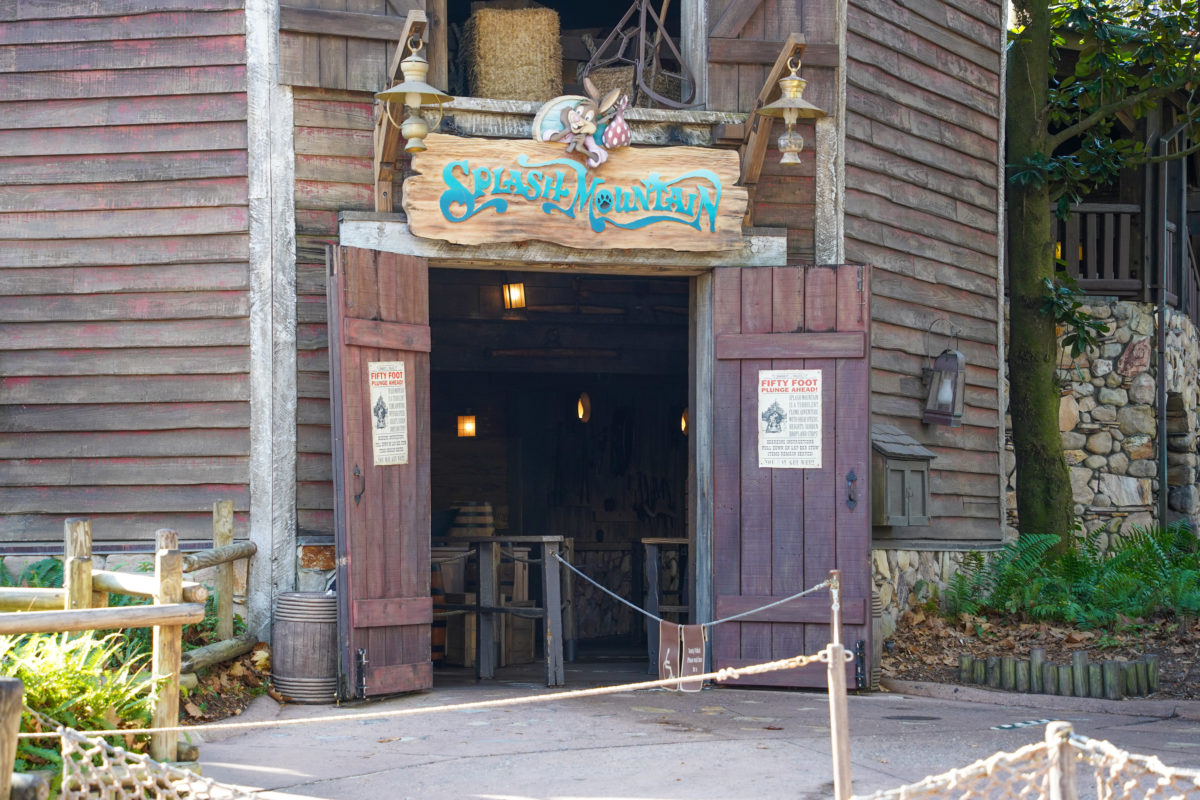
It would be narrow-minded to deride the ride as dated, overhyped, or even only as good as the thrills achieved on its several drops. The audio-animatronics of the Florida version of the ride are among the best ever built, and when properly maintained (see Tokyo Disneyland’s ride today), they are as good, if not even better in quality than several of Disney’s most recent figures on modern-day attractions such as Star Wars: Rise of the Resistance or Avengers Assemble: Flight Force. The show scenes of Splash Mountain are undeniably impressive and charming, while the soundtrack is one of the most memorable ever created for a theme park ride.
As I have said before, two things can be true: it may very well be time to say goodbye to Splash Mountain, and it is still one of the greatest attractions ever built. The march of time and change in cultural sensibilities should not erase the work of many artisans who created such a beloved ride.
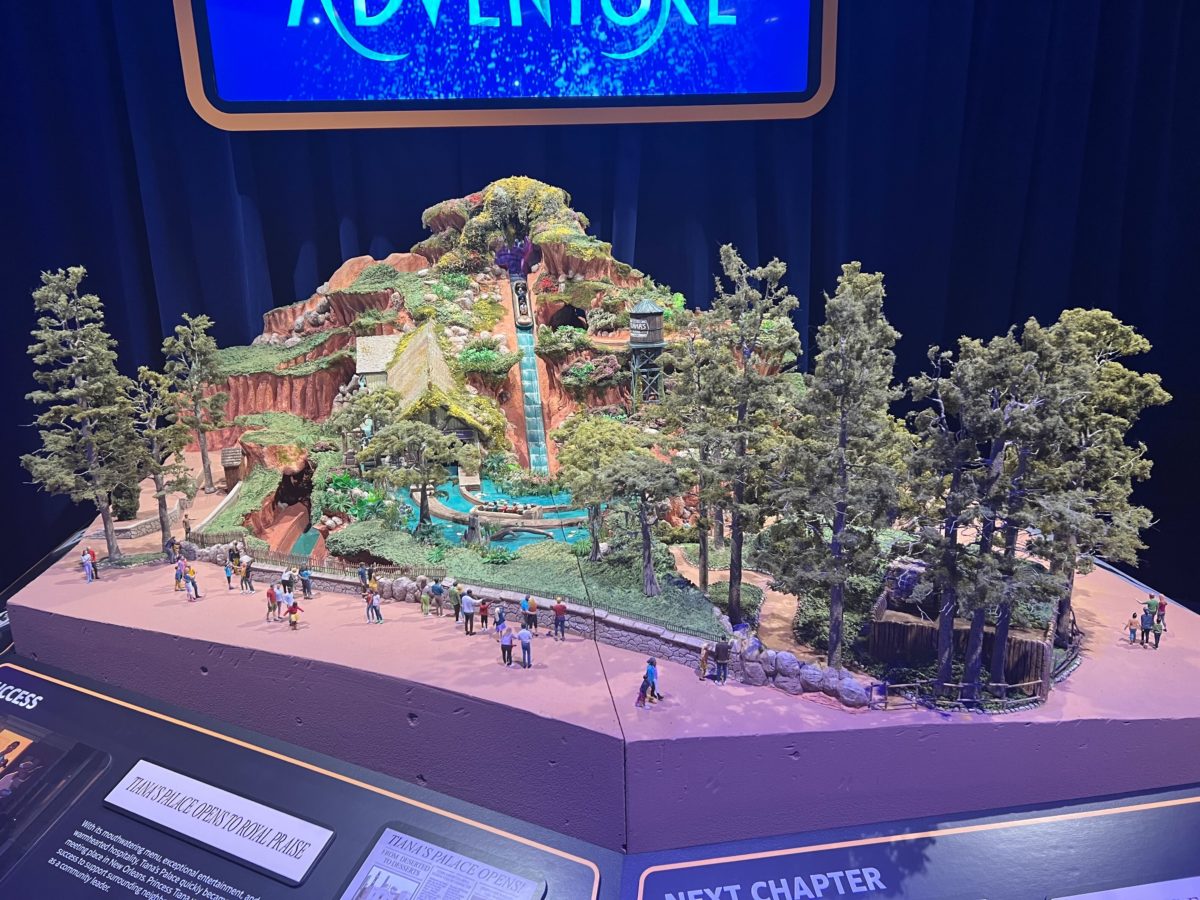
I am hopeful for the future and that the bones of the ride can present a canvas on which the next great Disney attraction can be painted. Here’s hoping that everyone involved in Tiana’s Bayou Adventure can create something either as endearing or even more so than the beloved Splash Mountain.
For the latest Disney Parks news and info, follow WDW News Today on Twitter, Facebook, and Instagram.

So sad and pointless to see Splash Mountain gone…